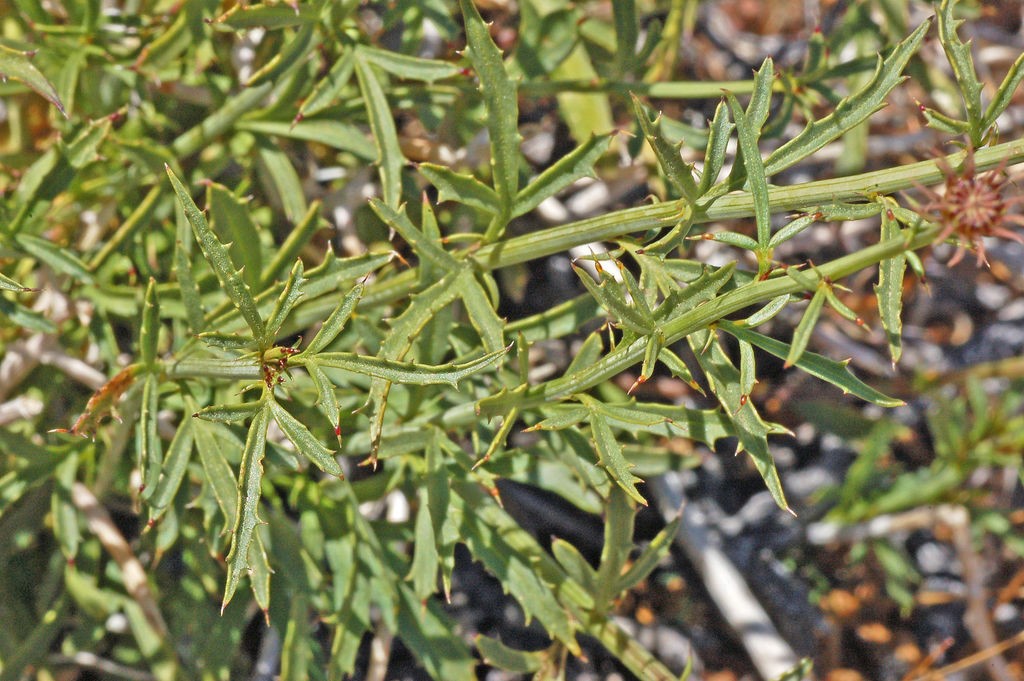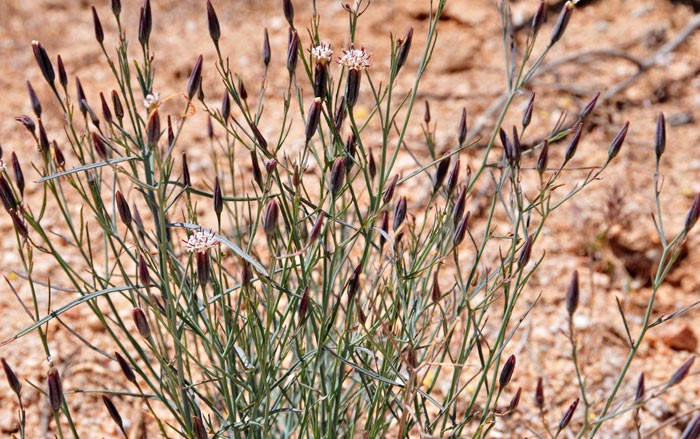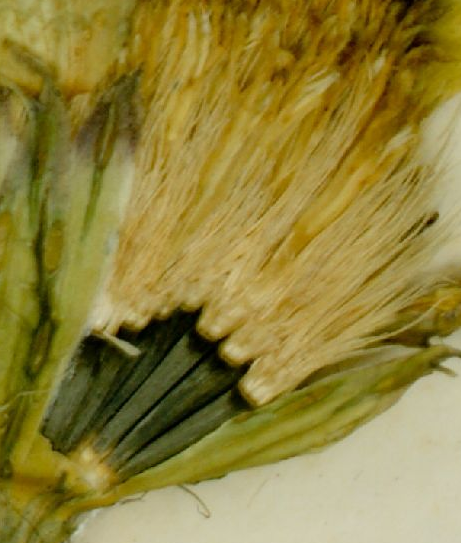Hierba de Zorrillo
Amongst the names papalo has accrued lies the not altogether unexpected moniker “skunk weed”, although I have never found the word “zorrillo” used and for some reason online translators always come back with “hierba mofeta”; the word used is mampuritu (1) and mampurite (2) (Morton 1968). My grasp of Spanish is rudimentary at best and there is no doubt I am missing something obvious (3).
- in Papiamentu (or Papiamento)- a Portuguese-based creole language spoken in the Dutch Caribbean. It is the most-widely spoken language on the islands of Aruba, Bonaire and Curaçao.
- “skunky”
- there is also the fact that this is not a Spanish word but a borrowed word
The name “mampuritu” and its derivatives are often quoted as meaning “skunk” in Spanish. This is confusing as the translation for skunk is mofeta (1) or zorrillo (2).
- From Italian mofeta (“pestilential exhalation”) and moffetta (“skunk”), from Latin mephitis (a Samnite goddess who personified, or averted, the poisonous gases emitted from swamps and volcanoes)
- zorro-illo (little fox) ?
The word mampuritu is used on the island of Curaçao to refer to a plant used to relieve gas pains. The plant referred to is P.macrocepalum (Morton 1968) and it is one of the oldest ancestral herbs of Curaçao, with a history of use that can be traced to the indigenous Caquetío—the original inhabitants of the island (1).
- Caquetio, Caiquetio, or Caiquetia are natives of northwestern Venezuela, living along the shores of Lake Maracaibo at the time of the Spanish conquest. They are a branch of the Arawak peoples.
Morton (1968) identifies mampuritu as P.macrocephalum and even differentiates it from P.ruderale (which is considered “an equally odoriferous plant from Venezuela”). Mampuritu is considered locally to be native to Curacao and Bonaire and is highly valued there as a medicinal tea.
P.ruderale is referred to as Yerba di mampuritu by the Government of the Netherlands Antilles in their dcbiodata.net.
Dr. José Antonio López Sandoval from the Facultad de Ciencias Agrícolas (Faculty of Agricultural Sciences) at UAEM (Universidad Autónoma del Estado de México) in a unit on herbal medicine speaks of a herb, Dyssodia porophylla, also of the Asteraceae family like papaloquelite, called Hierba de Zorillo (skunk weed) (1).

There may at some stage have been some confusion between this herb, Dyssodia porophylla (1), and the true Porophyllums in the naming of papaloquelite as skunk weed. I have no definitive source of information to prove this it is merely a supposition on my part.
- Syn Adenophyllum porophyllum (porophylloides) Hemsl., also known as Árnica del monte. This may also provide some confusion as in Brazil some porophyllums are also known as Árnica.
Hierba de Zorrillo has medicinal application in the treatment of skin conditions such as acne and rashes and a weak decoction is used as a wound wash that promotes healing. A “pomade” can be made by macerating the fresh herb in butter which can then be used to rub into bruises and contusions to aid in their healing process. Rätsch (2005) notes that in Mexico a decoction of tobacco leaves, capulin agarroso (Conostegia xalapensis) stems, guava leaves, avocado leaves, muicle herb (Justicia mexicana), Dyssodia porophylla and garlic is prepared as an external application to treat oedema of the legs.
It can also be used in conjunction with other herbs to treat respiratory illnesses (1)
- used along with cuachalalate (Amphipterygium adstringens)
Hernández Espejo (2017) elaborates on the previously mentioned decoction to be used for the treatment of oedema in the legs. She notes that this same decoction is used to treat chilblains (1). While the decoction is boiling the patients legs should be exposed to the steam produced. This should be done three days in a row. Once ready the liquid is used to wash the patients legs and feet. The liquid should be as hot as the patient can tolerate. After being washed the affected areas are rubbed lightly with an edible oil (type not mentioned) and then wrapped lightly in a clean thin cloth. Repeat until any infection has cleared.
Rodríguez-Chávez (etal 2016) notes that this herb is used traditionally in México to treat haemorrhoids, ulcers, tumours, stomachache, pain and kidney inflammation. To treat stomach pain an infusion of 2 or 3 flowers is taken as needed.
Dyssodia is considered to be a “hot” herb.
- Chilblains are the painful inflammation of small blood vessels in your skin that occur in response to repeated exposure to cold but not freezing air. Also known as pernio, chilblains can cause itching, red patches, swelling and blistering on your hands and feet.
The herb may be also used, either fresh or dried, by curanderos (1) in the healing practice called a “limpia” (2) where bunches of a strongly scented herb are used to brush or sweep the patient. A limpia is a ritual cleansing or purification which can be used to remove negative energies from the patient which can be necessary for the healing process to be able to start. A deeper ritual is that of the “soul retrieval” which is performed after a case of susto (3). The use of eggs in these rituals is common. An unbroken raw egg is rolled over the patients body. The egg can then either be broken (4) or disposed of along with the herbs (5). Curanderismo is a traditional school of healing as practised in Mexico. It has been influenced by the Moorish knowledge introduced into México by the Spaniards and by the healing traditions of Africa which were carried into Mexico on the backs of slave labour.
- a traditional native healer/shaman found in Latin America and the South West United States
- Limpias, also known as barridas (sweepings), cleanse the mind, body, spirit, and soul by sweeping away negative energies in preparation for healing or another rite called a soul retrieval.
- Loosely translated as “magical fright”. This occurs (particularly in children) when a fearful event causes the soul (or a portion of it) to be separated from the body. This separation is a potential doorway to contracting any number of illnesses. The persons soul must be “retrieved” to prevent this or, in the case of illness already being contracted, the soul must be retrieved so that the healing process can begin. Modern incarnations of this treatment are being investigated as to its efficacy in addressing such conditions as Post Traumatic Stress Disorder (PTSD)
- The egg is broken into a glass of water and “read” to determine the potential cause of the current problem
- “at the end of the session, the egg and plants are thrown onto the crossroads of some paths, far from the patient’s home” placing as great a distance possible between the patient and what was removed by the limpia.
Adenophyllum porophylloides
Adenophyllum “gland – leaf” (having glandular leaves), porophylloides “with leaves like those of Porophyllum”
Syn. Dyssodia porophylla var.radiata DC; Pteronia porophylla Cav.; Adenophyllum porophyllum Hemsl.; Lebetina porophylla A. Neis
Also called : Yerba del Venado, Coronilla, Cempasuchil sencillo, Corona de rey, arnica, San Felipe dyssodia, San Felipe dogweed, San Felipe Fetid Marigold, poreleaf dogweed,
The image of the Adenophyllum porophylloides flower above shows the resin glands on the bractlets. These glands are also present on the leaves and phyllaries and they impart an “unpleasant” odour to the plant. The scent has been likened to that of Tagetes lemmonii (which I do not find at all unpleasant).
T.lemmonii is native to the states of Sonora and Sinaloa in north-western Mexico as well as southern Arizona in the Estados Unidos. It was originally collected in south-eastern Arizona in the late 1800s by self-taught field botanists, the Lemmons, a husband and wife collecting team. The Lemmons were responsible for numerous botanical finds mostly in the Sierra Nevada foothills.
The aroma of this plant has been likened to the scent of marigold mixed with lemon and mint and, like coriander, its taste is somewhat polarising with some finding it agreeable whilst others find the smell quite displeasing (and deer seem to completely leave this plant alone).

Tagetes lemmonii flowers 
T.lemmonii leaves
Kendall (2013) notes that the leaves of this plant “give off a strong odor when bruised”, reportedly similar to that of Deerweed (Porophyllum gracile).

The flowers of A.porophylloides do bear a striking resemblance to those of the Porophyllums, as does the structure of its seeds.


https://serv.biokic.asu.edu/imglib/h_seinet/seinet/ASU/ASU0013/ASU0013986a_lg.jpg
References
- Hernández Espejo. L; (2017) Una Planta Puede Salvarte La Vida : Secerataria de Gobernacion : Centro Estatal de Desarrollo Municipal : Accessed 26/05/20
- Kane, C.W. : (2011) Herbal Medicine of the American Southwest : ISBN 10 0977133370
- Kendall, William T, a SPECIES DISTRIBUTION LISTING for TOWNSHIP 14 SOUTH, RANGE 13 EAST PIMA COUNTY, ARIZONA Gila and Salt River Baseline and Meridian : United States Department of Agriculture, Forest Service, General Technical Report RM-73 : May 8, 2013 Update
- Morton,Julia F. : Plants Associated with Esophageal Cancer Cases in Curacao : CANCER RESEARCH 28, 2268-2271, November 1968 : Morton Collectanea, University of Miami, Coral Gables, Florida 33146
- Morton, Julia F. : A Survey of Medicinal Plants of Curacao : Presented at the 8th Annual Meeting, American Society of Pharmacognosy, University of Michigan, Ann Arbor, Michigan, June 27, 1967
- Morton, J.F. (1968). Plants associated with esophageal cancer cases in Curacao. Cancer research, 28 11, 2268-71 .
- Ratsch, C., The Encyclopedia of Psychoactive Plants : Ethnopharmacology and its Applications (2005) : Park Street Press : ISBN: 9780892819782
- Rodríguez Chávez, José Luis & Egas, Verónica & Linares, Edelmira & Bye, Robert & Hernandez, Tzasna & Espinosa-García, Francisco & Delgado, Guillermo. (2016). Mexican Arnica (Heterotheca inuloides Cass. Asteraceae: Astereae): Ethnomedical uses, chemical constituents and biological properties. Journal of Ethnopharmacology. 195. 10.1016/j.jep.2016.11.021.


